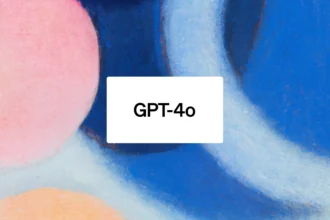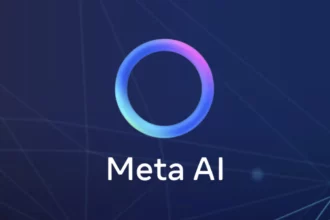Retrieval Augmented Generation (RAG) for Large Language Models
Ah, the world of Large Language Models (LLMs) can be quite a maze to navigate, right? It’s like diving into a library with millions of books but not knowing where to find the right one. But fear not, because there’s a hero in this storytelling – Retrieval Augmented Generation or RAG!
Let’s delve into the magical realm of Retrieval Augmented Generation (RAG) for LLMs. Imagine RAG as your trusty sidekick, equipped with the superpower to fetch relevant information from vast external knowledge sources like databases and arm your LLM with the latest and most accurate facts.
Now, let’s unravel this fascinating concept further and discover how RAG transforms plain old LLMs into knowledge powerhouses!
Table of Contents
ToggleBenefits of RAG in Large Language Models
Benefits of RAG in Large Language Models:
Retrieval Augmented Generation (RAG) swoops in as the hero to rescue Large Language Models (LLMs) from the treacherous waters of misinformation. Picture this: RAG acts like a wise old owl, perched atop the LLMs, guiding them through the dense forest of data out there. With RAG by their side, LLMs bid farewell to hallucinations – those pesky moments when AI blunders and serves up erroneous or downright illogical responses.
Think of RAG as the magical boost that keeps LLMs sharp and up-to-date with dynamic knowledge. This dynamic duo works hand in hand to fetch relevant facts from external sources, ensuring your LLM is always dressed to impress with accurate and reliable information. No more last season’s data for your AI fashionista!
Now, why do you need RAG in your LLM arsenal? Well, large language models often stumble upon the infamous hurdle called hallucination – not the psychedelic kind but rather conjuring up fake realities! It’s like trying to convince someone that unicorns really exist – sure, it sounds whimsical but hardly useful when you need real answers! Here enters our superhero RAG, armed with its trusty external datastore at inference time. By dishing out a rich cocktail of context, history, and fresh knowledge into the prompt mix (cue stirring music), RAG ensures your LLM predicts like an all-knowing sage without breaking a sweat!
Ever wondered how RAG waves its magic wand over boring old databases? Brace yourself for some tech wizardry! Picture this: RAG whispers sweet nothings into a database’s ear – well actually sends out language model-generated queries – which results in an enchanting dance where relevant documents are unearthed and seamlessly woven into your model’s narrative fabric. By tapping into vector databases, not only does RAG summon forth pertinent information at lightning speed but also enhances text generation quality.
So next time you hear your AI spouting nonsense or see it donning fake news like a dodgy disguise at a masquerade ball – fret not! Just summon RAG to set things straight and watch as your LLM transforms into a dazzling fountain of wisdom, ready to tackle any query thrown its way!
Real-World Applications and Examples of RAG in LLMs
Real-World Applications and Examples of RAG in LLMs:
In the exciting world of Large Language Models (LLMs), where knowledge is power, Retrieval Augmented Generation (RAG) emerges as the knight in shining armor, enhancing the reliability and trustworthiness of these AI giants. As RAG continues to evolve, it opens up a treasure trove of possibilities for LLMs in diverse real-world applications that go beyond mere text generation.
Let’s dive deeper into how RAG strides confidently into real-world scenarios, transforming LLMs into indispensable tools for communication, education, and problem-solving prowess.
Building Production-Grade RAG Systems: When it comes to deploying RAG in production environments, there are key considerations to ensure seamless integration. From retrieving and utilizing external evidence to reducing the risk of generating inaccurate content, production-grade RAG systems require adept handling. By incorporating external crowd-sourced knowledge like databases and bridging domain knowledge gaps prevalent in LLMs, these systems substantially boost utility and effectiveness.
One common challenge faced by LLMs is adapting to changing or evolving information landscapes swiftly. They often struggle to keep pace with the latest data unless aided by external sources. Here steps in RAG as a game-changer by leveraging current evidence for informed text generation processes. This dynamic approach equips LLMs with the agility needed to remain pertinent and precise even amidst rapid updates.
RAG’s prowess shines brightly in scenarios demanding continuous learning and timely updates such as customer support automation. By seamlessly integrating external knowledge like databases, this superhero among AI tools ensures that your models stay ahead of the curve without requiring tedious retraining for task-specific applications.
Did you know that RAG leverages vector databases and feature stores as its trusty sidekicks? These systems provide a rich pool of external data essential for enhancing the context available to LLMs during text generation. Through its unique blend of information retrieval and text generation prowess, RAG magnificently enriches user prompts with valuable context information sourced from external data stores. Imagine giving your LLM a turbo boost by feeding it relevant background information akin to a storyteller weaving intricate plot twists effortlessly!
So next time you’re contemplating how to elevate your LLM’s performance or seeking ways to keep up with ever-changing information landscapes – remember that RAG stands ready as your dependable ally in navigating the complex terrains of AI applications!
Innovative Techniques and Tools for Implementing RAG
Innovative Techniques and Tools for Implementing RAG:
When exploring the realms of RAG, one can’t help but marvel at the myriad use cases this superhero brings to the table. Picture this: RAG isn’t just a one-trick pony; it’s a versatile tool that can slay misinformation dragons, enhance text generation quality, and even revolutionize customer support automation. From enhancing communication to solving complex problems, RAG shines as a beacon of reliability and trustworthiness in the world of Large Language Models (LLMs).
Now, let’s break down some key paradigms that have shaped the evolution of RAG systems over time. Imagine starting with Naive RAG, where the traditional processes of indexing, retrieval, and generation lay the foundation. This basic yet effective approach involves querying relevant documents based on user input, integrating conversational history for multi-turn dialogues if needed, and generating responses that are both accurate and contextually rich.
As time passed and demands grew more sophisticated, Advanced RAG stepped into the spotlight, offering refined techniques to boost performance and efficiency. Think of it as Naive RAG’s cooler cousin with upgraded features and enhanced capabilities to tackle more complex scenarios with ease.
But wait, there’s more! Enter Modular RAG – the cutting-edge evolution that takes customization to a whole new level. Modular RAG allows for greater flexibility by breaking down the process into modular components for improved scalability and tailored solutions to suit diverse requirements.
Now onto an important consideration – cost-effectiveness. Implementing RAG isn’t just about technical prowess; it’s also about strategic decision-making that can lead to substantial cost savings for organizations. By leveraging existing data resources for real-time updates and minimizing the need for extensive retraining, businesses can tap into RAG’s economic advantage while boosting their AI capabilities without breaking the bank.
So, whether you’re aiming to streamline operations, enhance customer interactions, or simply stay ahead in the AI game without burning through your budget – implementing RAG is not just a choice but a strategic move towards unlocking new possibilities in today’s dynamic digital landscape.
- RAG (Retrieval Augmented Generation) acts as a hero in the world of Large Language Models (LLMs), fetching relevant information from external knowledge sources to enhance accuracy.
- RAG helps LLMs avoid misinformation and hallucinations by providing up-to-date and reliable facts.
- By integrating RAG into LLMs, AI models can access external data sources at inference time, ensuring accurate predictions.
- RAG transforms LLMs into knowledge powerhouses by guiding them through vast data and keeping them sharp with dynamic information.
- Having RAG in your LLM arsenal is crucial to prevent hallucination, where AI may generate fake or illogical responses without external guidance.




